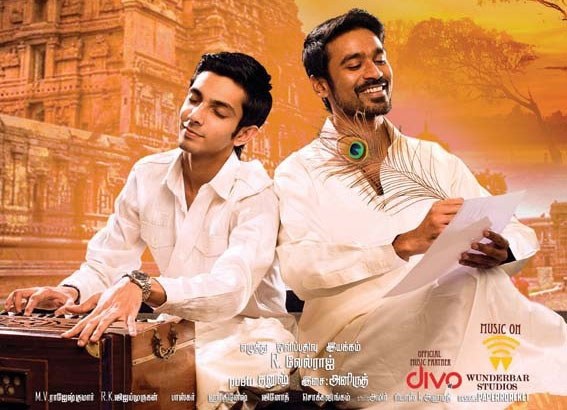Subramaniapuram is a tough film to watch. It starts off well enough, with Eighties’ nostalgia and charming love scenes set to Ilaiyaraaja hits. Azhagar (Jai) and Paraman (Sasikumar) are unemployed youth who are prone to anger, and, therefore, no strangers to the local police. They have to be bailed out frequently and this cements their loyalty to Kanagu (Samuthirakani), the younger brother of an ex-councillor.
Life for them is an unending game of Ulle veliye. They spend their nights in jail, their days in the corner tea shop, waiting for a glimpse of Thulasi (played by the wide-eyed Swathi). Of the four, Azhagar is perhaps more sensitive. These are not good men. These are not clever men with an ability to think for themselves. Their anger fuels one mistake and leads to many more, descending into unrelenting cruelty.
Life is futile, director Sasikumar says through this film. One wrong move, and your life lies in tatters.
The film’s sullen leads set out on an ill-fated journey that tests their love and friendship. Betrayal abounds in this creation about four friends who become pawns in a game of political one-upmanship. The angry young men are goaded into doing something that changes their lives forever, leading to a stunning climax. Director-actor Anurag Kashyap declared this was his favourite film from the last decade and even paid homage in the opening credits of his Gangs of Wasseypur to the Madurai Triumvirate – directors Sasikumar, Bala and Ameer – for inspiring him to get back to his roots.
The movie propelled Sasikumar to the big league. Subramaniapuram had that intrinsic Tamil connect – it spoke the language that the masses knew, and it told a story they could understand if not identify with. There was no artificial set, no songs where the actors danced around trees. For an audience raised on a steady diet of artificial, mainstream films, Subramaniapuram was the real thing.
As ace director Bharathi Raja once said: “Tamil padathula mann vasanai irukkanum {Tamil films must smell of the soil}. It is very important. How much longer can we watch films that smell of perfume and petrol fumes? In this way, Subramaniapuram was a very important film.”
Subramaniapuram released at a time when films set in urban spaces (Dasavatharam, Abiyum Naanum, Vaaranam Aayiram, etc) were popular. In taking back Tamil cinema to a time when life was simpler (and more violent, perhaps), Subramaniapuram proved to be a sort of time machine. It was critically well-received, and launched a series of copy-cat films focussing on angry young men from Tamil Nadu’s Southern districts.
The movie is technically excellent as well – cinematographer SR Kadhir needs particular mention for his stunning shots, and also for his excellent recreation of Seventies’ style camerawork. The cinematographer says that they did not set out to make an iconic film. “We wanted to make a good film. That is all.”
Recommended
However, it is not easy to dismiss the fact that this film stems from a core of misogyny. Sasikumar’s world has no place for women. They exist on the fringes – out of reach of the men, and painted in broad strokes. Swathi’s Thulasi alternates between coy virgin and manipulative villain, while the other women offered screen time are painted as shrews or adulterers. Couched in Subramaniapuram’s realism is a dangerous anti-women stance that needs to be addressed. The ending, where Sasikumar’s Paramar rants about Swathi (who, in typical Tamil film heroine style, has no agency, and is, hence, blameless) is designed in a way that it goads the audience into asking for her head. The sympathies in this film always lie with the men. And, that is a problem.
This does not seem to have affected the special place Subramaniapuram holds in Tamil cinema. And, it has never been as visible than today – the 10th anniversary of its release. The film is trending on social media, and renewed attention has been bestowed on it. But, will it hold good for another decade? That’s something the masses have to answer.


